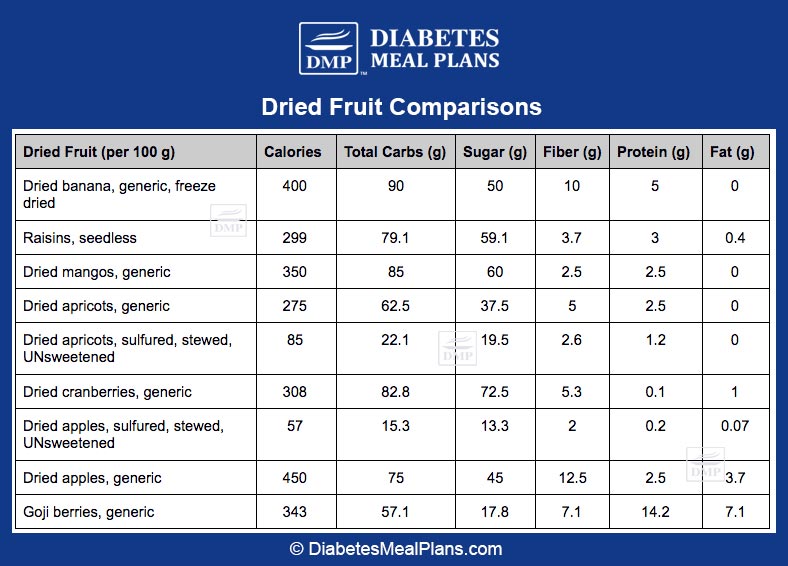Table of Contents[Hide][Show]
Raisins can be a fun ingredient to sweeten up a green salad, sprinkle over oatmeal, or eat by the handful.
You may even have cherished memories of enjoying a little box of raisins in your school lunch as a kid!
Certain foods can taste good and be a bit nostalgic, but does that mean they’re a healthy choice for people with type 2 diabetes?
Let’s take a look at the nutrition facts to see if raisins are blood sugar-friendly…

What are Raisins?
The old French word, “raisin,” literally translates to “grape” in English, so we don’t have to wonder what raisins are made of!
Raisins are grapes that have been dried in one of two ways.
The classic black or dark purple raisins look that way because they have been dried in the sun over the course of a few weeks. This slow process turns a juicy green grape into a shriveled, dark, super-sweet raisin.
Golden raisins (also called sultanas) have a lighter color from spending a short amount of time in a dehydrator that sucks the moisture from them.
Surprisingly, both black raisins and golden raisins both come from green grapes!
Raisin Nutrition Facts
Regardless of the type of raisin we’re talking about, the first thing to know is that these super “snack-able” treats are packed to the brim with sugar.
Unlike some other dried fruits, raisins don’t typically contain any added sugars; they’re sweet enough on their own.
This may sound like a major selling point, but it really isn’t. If you want to lower your blood sugar and A1c, you should reduce all forms of carbs including large amounts of fruit sugar.
Just how much sugar are we talking about?
Here’s what you’ll get in a small box of classic, black raisins (about 1.5oz or 43g):
- Calories: 129
- Total Carbs: 34g
- Fiber: 1.6g
- Protein: 1.3g
- Fat: 0.2g
Yep, that serving of raisins contains 34g of carbs (sugar)!
To put that number into perspective, an average donut has 20g of carbs, an 8oz bottle of Coke has 26g of carbs, and two large slices of bread have 30g of carbs. These foods are all still lower in carbs than a little box of raisins.
This starts to make sense once you realize that eating a 1.5oz box of raisins is equivalent to eating 90 whole grapes.
Would you eat that many grapes in one sitting?

Raisins vs Other Dried Fruit
If we compare raisins to other varieties of dried fruit, you’ll see a pattern of high-sugar foods that are best avoided.
We recommend against eating too many high carb fruits in general, but dried fruits are even worse than fresh ones.
Take a look at how many carbs are in these dried fruit options…

Another “con” is that it’s just so easy to get carried away when eating dried fruit.
The portion sizes look tiny and dried fruit is easy to mindlessly snack on without feeling too full. Before you know it, you’ve downed dozens of carbs and hundreds of calories that you didn’t really need, and to top it all off…you’re still hungry!
Turning off your hunger signals and stabilizing blood sugar requires fat, protein, and fiber. Most dried fruits, including raisins, are missing meaningful amounts of all three.
Recommendation for Raisins & Type 2 Diabetes
Clearly, we don’t recommend raisins for people with diabetes. There is too many carbs and not enough fiber – they may be tasty, but they’re a recipe for a blood sugar high.
So, what should you eat instead of raisins?
Raisins are most commonly used as a sweet add-in for salads, trail mix, or on oatmeal in the morning.
Here are some blood sugar friendly “swaps” that remove the raisins from your meal but keep the fun!
Liven Fresh Salads
It’s easy to liven up a green veggie salad with lower carb ingredients like different cheeses (there are so many to choose from), salad dressings, nuts, seeds, and even tangy relishes.
You can introduce a sweet flavor into your salad by opting for a stevia-sweetened salad dressing or adding a few fresh berries on top!
And don’t forget to add cashews, almonds, or walnuts to create that satisfying “crunch.”
You can check out our salad dressing guide for some flavorful inspiration.
Bulk Up Trail Mix
When making trail mix, focus on bulking things up by using protein, fat, and fiber-rich ingredients like nuts and seeds rather than unsatisfying dried fruits.
Use sunflower seeds, pumpkin seeds, walnuts, roasted almonds, salted peanuts, cashews, hazelnuts…so many options!
For a hint of sweetness, try adding unsweetened coconut chips or sugar-free chocolate chips.
Boost your Breakfast
Raisins sprinkled over your morning oatmeal is a classic, but that’s an ultra-high-carb meal!
Swap oatmeal for a low carb alternative like this yummy muesli. Skip the raisin topping and finish it off with a small handful of berries, crushed nuts, desiccated coconut, and ground cinnamon.
Wondering if other foods are safe to eat? Download our recommended food list below.

Leave a Reply